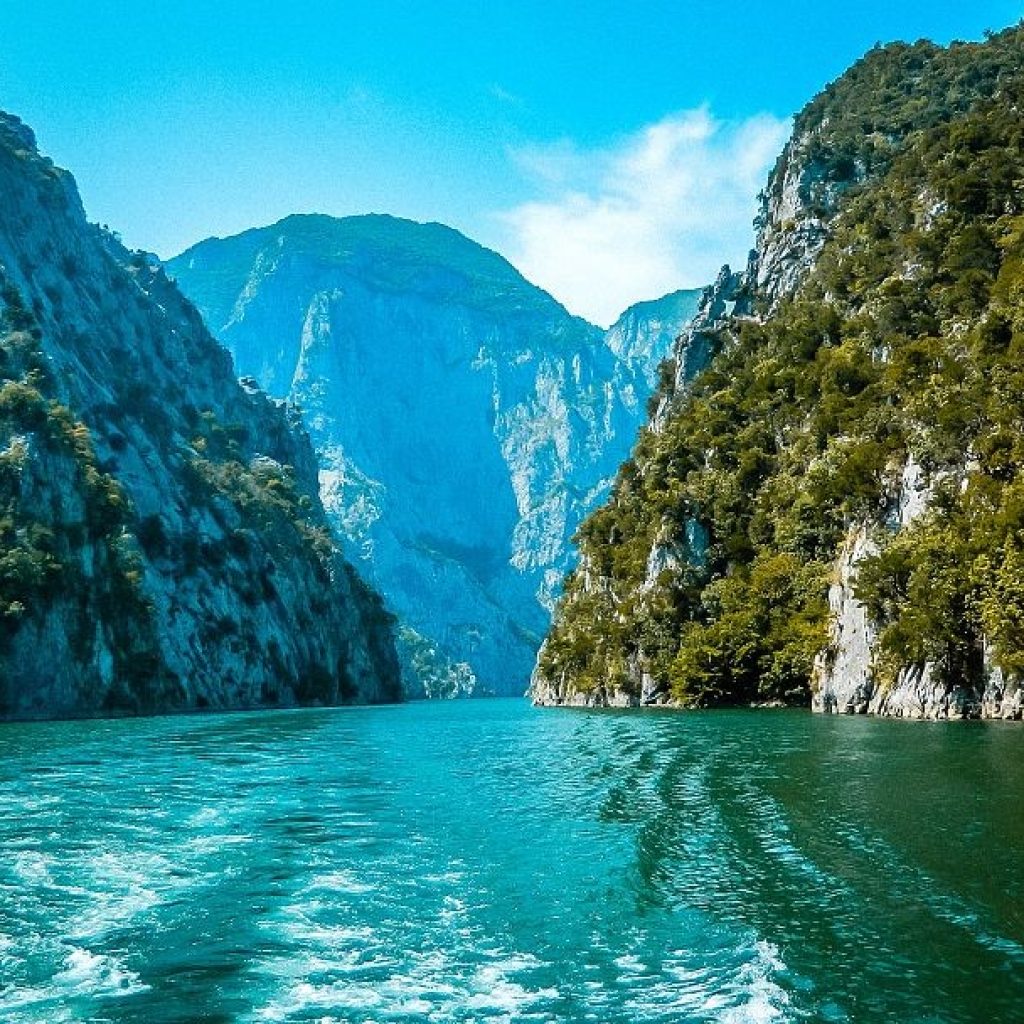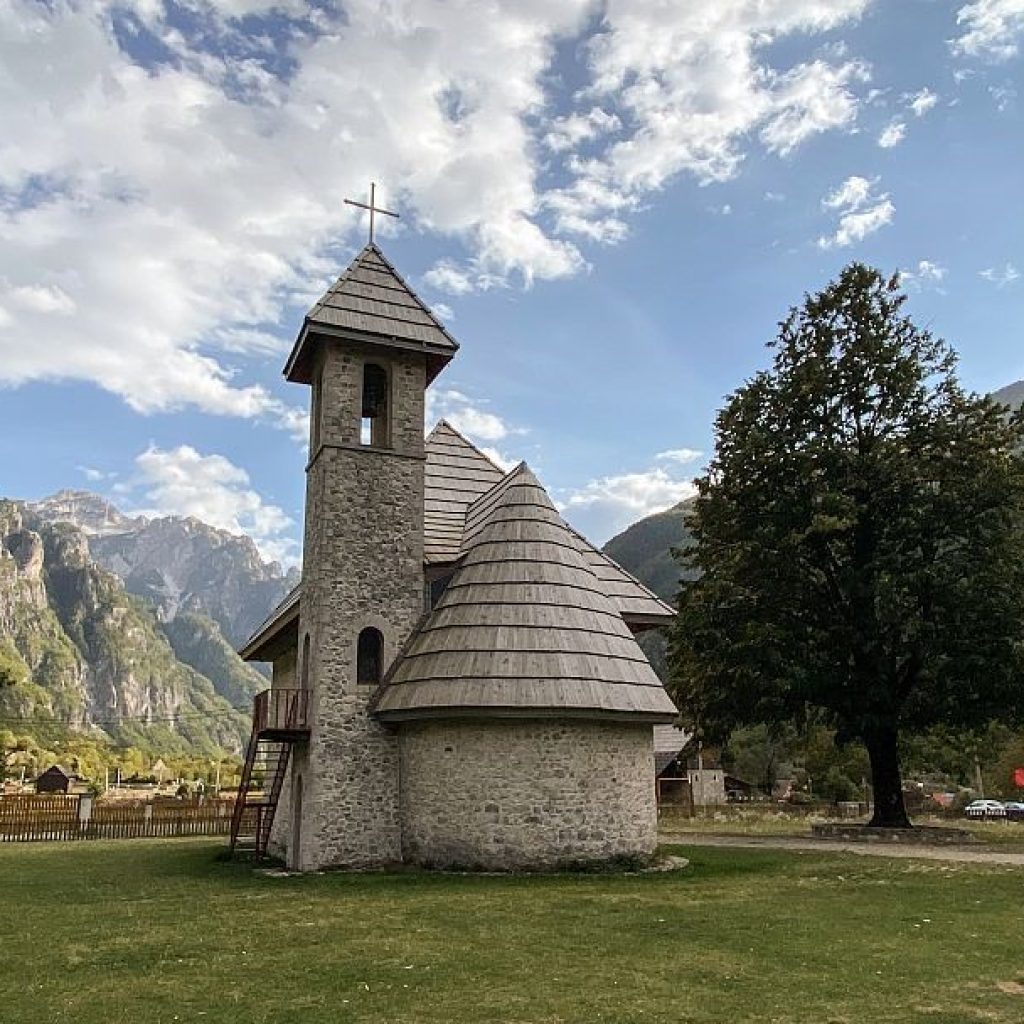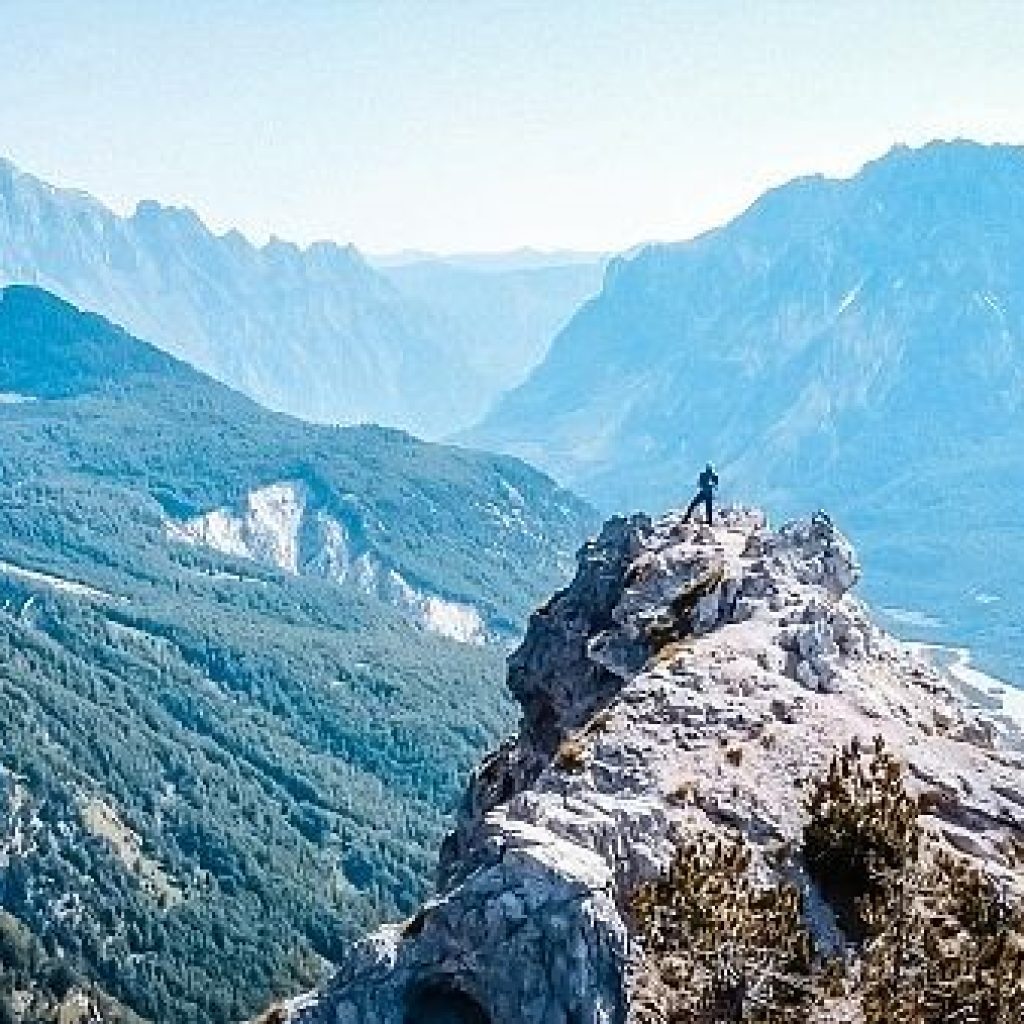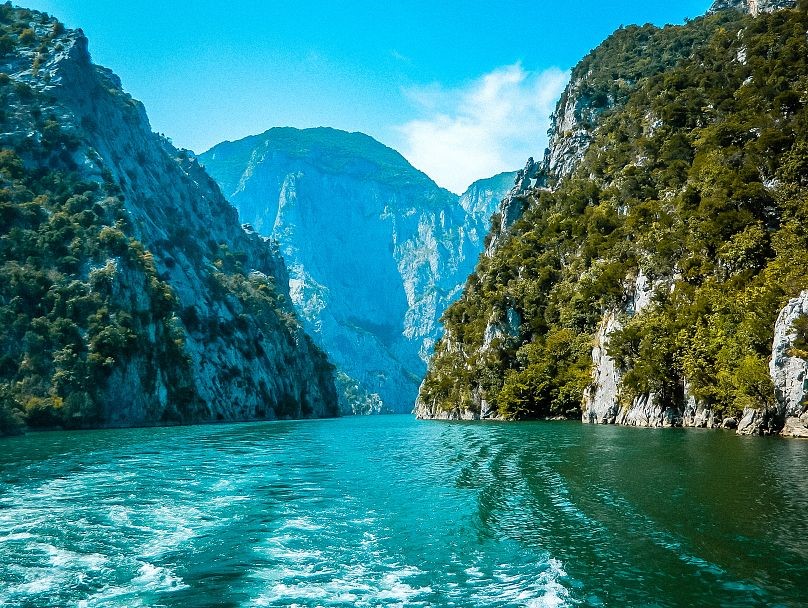The Valbona Pass is an accessible (though not easy) hiking route that local tour companies have incorporated into a convenient three-day adventure.
After a four-hour, lung-busting ascent, we climb the last steps up the rocky scree to reach the vertiginous summit of the Valbona Pass.
Surrounding us is the untamed wilderness of the irresistibly-named Accursed Mountains in northern Albania. Ominous storm clouds are gathering between the jagged peaks and ridges in the direction of our descent over the other side.
For nearly half of the 20th century, this brooding landscape was closed off to the world under communist rule. Since opening up again, the region has bewitched hikers and adventurers with its remoteness and quietude.
But beyond that, it remained an off-beat destination in a country too often tainted by stereotypes – until a few years ago.
Albania’s northern mountain range is now much more on travellers’ radars. It made it into the New York Times’ 52 Destinations for 2024 and budget airlines including Ryanair and Wizz have launched new routes to the country.
For now, it is still a serene spot. But it is at a pivotal point where the influx of tourists seeking its rugged nature and non-commercialised hospitality might be the cause of their disappearance.
For a sustainable, slow trip in these hinterlands, try this three-day Valbona Pass itinerary for a taster of life in the 800,000 km-squared Alps of Albania National Park.
What to do in Albania: How to hike the Valbona Pass
The Valbona Pass is an accessible (though not easy) hiking route that local tour companies have incorporated into a convenient three-day adventure.
Tourists first need to make their way to the nearest city, Shkoder, and book in for a night.
Arriving through the gritty residential blocks of the outskirts is underwhelming, but get to the city early enough to spend time wandering the pedestrianised central streets with cafe tables spilling onto the pavement.

On Lake Komani, the ferry sails through a long gorge of emerald water flanked by fierce rock faces.Abenteuer Albanien
Booking with one of the many local companies or through your hotel, you can arrange an early pickup from your accommodation the next morning to begin your itinerary.
The first leg of the journey is in a minivan for around one and a half hours to Lake Komani. Here, you board a crowded ferry – grab a waterside seat for the view – and sail for about two and a half hours through a long gorge of emerald water flanked by fierce rock faces.
Upon disembarking at the Fierza ferry stop, you’ll be met by another minivan that takes you the rest of the way to the town of Valbona, the gateway to the mountains.
You’ll find guesthouses scattered along the snaking road of the village, but try to book closest to the trailhead. Aim to stay in one of the old stone constructions with steep slate roofs and chalet-like simple wooden interiors.
You’ll awake to a breakfast spread of homemade cheese, freshly-picked tomatoes and cucumbers and warm bread that you can enjoy outside with a view of sharp, snow-flecked mountain peaks.
How to hike from Valbona to Theth
The length of your hiking day will vary depending on the location of your accommodation in Valbona and Theth, but the trail is 12 kilometres long and takes between seven and 10 hours.
The steep ascent takes you through a verdant valley of pines and between monolithic rock faces and limestone towers. There are unexpected pit stops along the way in rickety wooden shelters where all provisions arrive by mule or with the hardy owner.
From the spectacular summit, you can gaze across some of the most unspoilt scenery left in Europe.
The descent to the remote village of Theth winds through wildflower-strewn meadows and grassy slopes.

Life in Theth revolves around pastoral traditions and soulful hospitality
The mountain community is a scattering of stone buildings and barns in a wide green plateau fringed by mountains. You pass fields and pastures bordered by wooden fences with conical piles of hay ready for livestock.
Life revolves around pastoral traditions and soulful hospitality, which both find their roots in the ancient code of the Kanun established by these Highland communities.
The laws related to blood feuds and revenge killing have mainly been abandoned (though in Theth you can still visit an ancient stone tower with slit windows where intended targets could hide), but the emphasis on hosting travellers and guests perseveres.
In Theth, you find guesthouses and farm stays costing a pittance a night in creaking ancestral homes where owners prepare abundant meals from the products of their fields, cowsheds and beehives.

If daytripper tourism begins to boom, will the untouched landscape and the warm, unhurried hospitality survive?
Wander to a ramshackle bar clinging to a rock face above a nearby gorge, and you’ll likely be offered homemade raki with your morning coffee.
Until a few years ago, hikers made the return trip down the mountain along a potholed track in a jeep that would lurch sickeningly close to the sheer drop into the valley on one side.
Although not a pleasant journey, it was one of the reasons for the serene seclusion of the village. The new paved surface of this road is a sign of wider change.



0 Comment